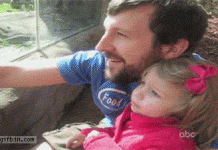Would you like to run a course with your dog without any pressure to perform or compete? Then mobility could be your sport together. Whether young or old, physically impaired, insecure, anxious, or after an operation as a rehabilitation measure, Mobility is suitable for every human-dog team.
What is Mobility?

Mobility is a quiet sporting and mental activity for dogs that is adapted to the dog’s individual physiognomic and health needs. Exercises in an obstacle course are mastered in a relaxed manner, without performance pressure or prescribed contact zones, which:
- skill
- coordination
- body awareness
- brainwork
- confidence
- trust
- obedience
develop and promote in the dog.
Individual exercises and tasks are taken from various dog sports such as agility, hoopers, rally obedience or lunging and put together to form an individual mobility course. The dog runs through a course that has stations with equipment, such as footbridges, seesaws and bridges, where balance is important. Or it goes through a tunnel or over a hurdle. There are also stations that have no equipment, but where obedience or nose work is practiced. Running through the mobility course is not about speed or maximum performance. Rather, the dog should be physically and mentally active in a gentle, joint-gentle and physically relieving way.
Especially dogs that suffer from joint and muscle problems or are still recovering from an operation can use Mobility as physiotherapeutic movement training. But Mobility is also a wonderful and age-appropriate occupation for a well-deserved “retirement” for dog seniors who have started a lot in performance-oriented dog sports.
Mobility is a dog sport that integrates many elements of other dog sports. The mental and physical activity is individually tailored to the dog.
Why is Mobility useful for the dog?

As with any meaningful activity that people and dogs do together, Mobility promotes team spirit and cohesion. By successfully overcoming the obstacles and tasks together, self-confidence and a trusting relationship grow, especially in anxious and insecure dogs. The different exercises in the mobility course promote and improve the dogs’ body awareness. It is not uncommon for a four-legged friend to suddenly realize that he also has legs at the back that need to be coordinated.
The special thing about Mobility is that you can put together the course individually for a dog in consultation with the veterinarian or the dog physiotherapist. Good dog schools that offer mobility will also be happy to show you the findings of a restricted dog and build the exercises accordingly. Mobility can therefore also be seen as part of physiotherapy after an operation or as preventive training for possible hereditary joint diseases, for example. Because regular mobility training keeps the joints flexible and keeps the dog’s supporting muscles fit or even builds them up.
Which dogs are suitable for Mobility?
Every dog, whether young, old, or physically handicapped, can take part in Mobility. At Mobility, each dog is treated individually.
Which dogs are suitable for Mobility?

Mobility is a dog sport that is basically suitable for all dogs, as the course is put together to suit the dog. Even if you don’t book an individual course, the course can also be run with a mixed group of dogs. Because, unlike agility, not every station has to be visited. If a dog in a group shouldn’t jump anymore, you can simply let it go around the hurdle in a circle. Dog seniors in particular should keep themselves physically and mentally fit, but not overexert themselves.
The same applies to puppy dogs. They too can train their coordination and body awareness with mobility and build up their self-confidence. Dog schools offer their own mobility puppy groups for this purpose.
But also dogs that have a health problems can go to Mobility. Regardless of whether:
- With HD, osteoarthritis, spondylosis
- Overweight
- Amputee
- Blind
- After an operation
It doesn’t matter whether it’s a puppy, a young dog, an adult dog, or a senior – our dogs of all ages love to solve tasks and have fun with their people.
How do you train Mobility?

The best thing to do is research a dog school online that offers mobility courses and take part in a trial training session.
What requirements does the dog owner have to meet?
The great thing about Mobility is that not only the dog is treated individually, but also the human being. If, for example, you can no longer walk as well as a person, Mobility can also include exercises for distance work. It’s not about speed in the dog sport, but about agility. Basically, you should of course be interested in working together with your dog, solving tasks, and having fun together. As with all dog sports, it is important that you put your own ambition aside and stay within your possibilities with the dog.
When can you start with Mobility?
Mobility is a dog sport that is suitable for dogs of all ages. It’s not about performance or speed.
Equipment & terrain for the perfect start
Surely you can also buy private equipment and work in the garden with your dog. But it’s more fun for dogs and humans to book a mobility course at a dog school. Professional trainers also have a trained eye for which exercises are best suited for a dog. Especially when it comes to a dog that needs special attention, such as joint diseases.
Conclusion – is my dog suitable for Mobility?

If you are now curious and want to find out whether your dog enjoys Mobility, simply visit a dog school and arrange a trial lesson. If you know about your dog’s health problems, the training can be tailored accordingly.






























